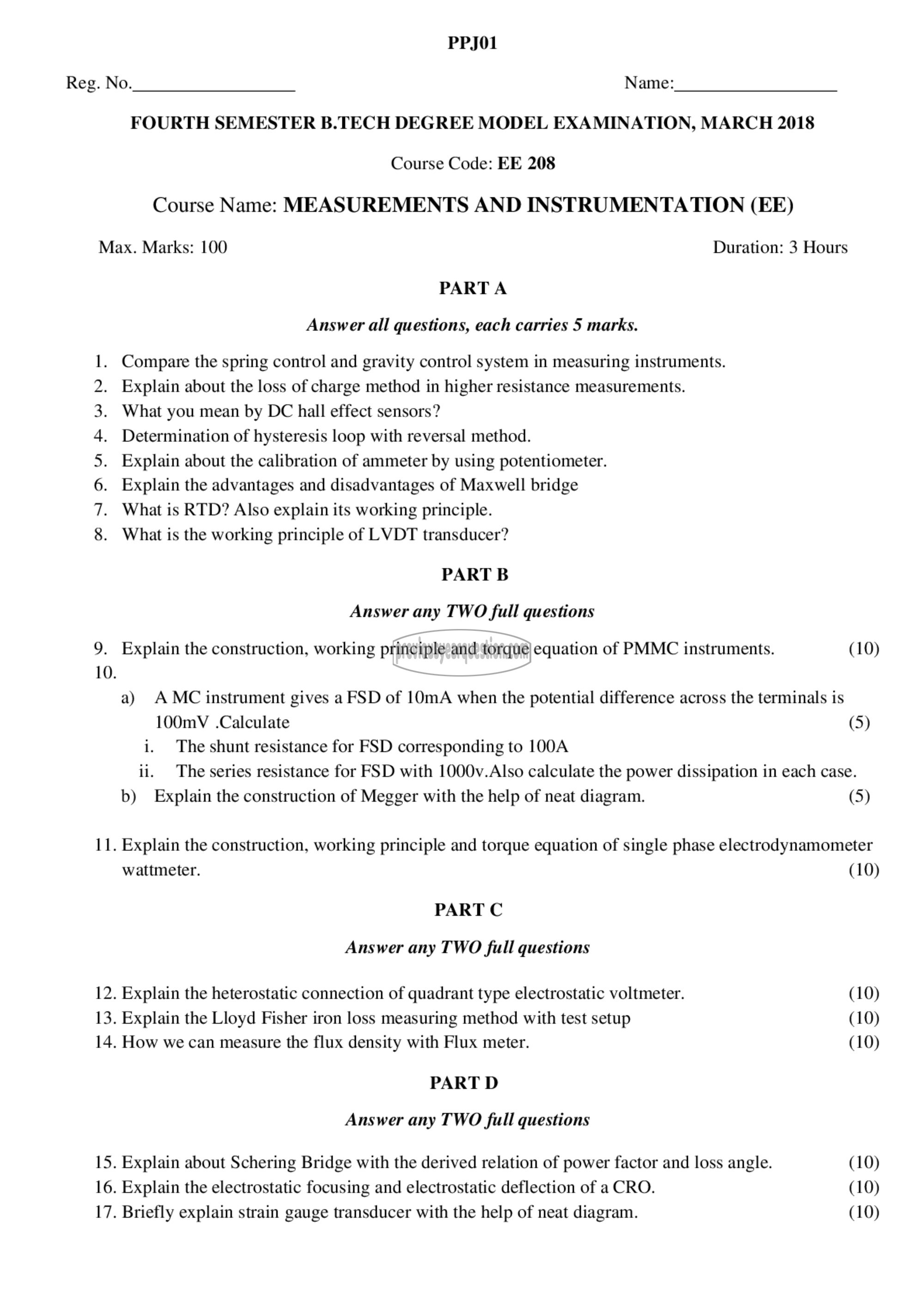APJ ABDUL KALAM TECHNOLOGICAL UNIVERSITY Previous Years Question Paper & Answer
Semester : SEMESTER 4
Subject : Measurements and Instrumentation
Year : 2018
Term : MARCH
Scheme : 2015 Full Time
Course Code : EE 208
Page:1
PPJ01
Reg. No. Name:
FOURTH SEMESTER B.TECH DEGREE MODEL EXAMINATION, MARCH 2018
Course Code: EE 208
Course Name: MEASUREMENTS AND INSTRUMENTATION (EE)
Max. Marks: 100 Duration: 3 Hours
PART A
Answer all questions, each carries 5 marks.
Compare the spring control and gravity control system in measuring instruments.
Explain about the loss of charge method in higher resistance measurements.
What you mean by DC hall effect sensors?
Determination of hysteresis loop with reversal method.
Explain about the calibration of ammeter by using potentiometer.
Explain the advantages and disadvantages of Maxwell bridge
What is RTD? Also explain its working principle.
What is the working principle of LVDT transducer?
PWN ~ ~ > یہ ہی
PART 13
Answer any TWO full questions
9. Explain the construction, working principle and torque equation of PMMC instruments.
10.
a) A MC instrument gives a FSD of 10mA when the potential difference across the terminals is
100mV .Calculate
i. The shunt resistance for FSD corresponding to 100A
(10)
(5)
ii. The series resistance for FSD with 1000v.Also calculate the power dissipation in each case.
b) Explain the construction of Megger with the help of neat diagram.
(5)
11. Explain the construction, working principle and torque equation of single phase electrodynamometer
wattmeter.
PART ட்
Answer any TWO full questions
12. Explain the heterostatic connection of quadrant type electrostatic voltmeter.
13. Explain the Lloyd Fisher iron loss measuring method with test setup
14. How we can measure the flux density with Flux meter.
PART 0
Answer any TWO full questions
15. Explain about Schering Bridge with the derived relation of power factor and loss angle.
16. Explain the electrostatic focusing and electrostatic deflection of a CRO.
17. Briefly explain strain gauge transducer with the help of neat diagram.
(10)
(10)
(10)
(10)
(10)
(10)
(10)
